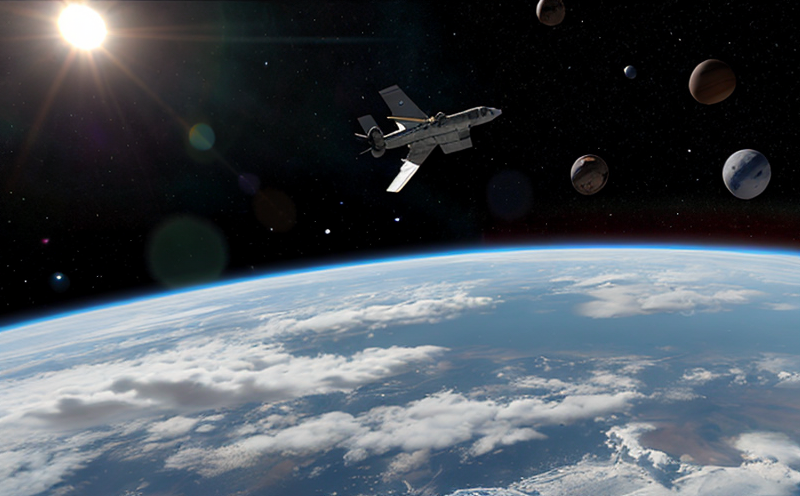High-Altitude & Space Environment Simulation Testing
In aerospace and aviation testing, high-altitude and space environment simulation plays a critical role in ensuring the reliability and performance of aircraft, spacecraft, and other space-related equipment. This type of testing is essential to replicate the harsh conditions that components may encounter during flight or operation in space. From extreme temperatures to low atmospheric pressure, these simulations aim to identify potential weaknesses before deployment.
The aerospace industry faces unique challenges due to the diverse environmental conditions encountered across different altitudes and orbits. High-altitude environments like those experienced by supersonic aircraft or high-flying satellites demand robust testing protocols that can accurately mimic such conditions. Space environment simulation, on the other hand, focuses primarily on vacuum, radiation, temperature fluctuations, and microgravity, which are critical for spacecraft and satellite components.
The testing process involves subjecting materials, parts, and subsystems to controlled environments that closely approximate real-world scenarios. This includes chambers capable of creating hypobaric (low-pressure) conditions as low as 10 Torr, simulating altitudes above 65 kilometers where the atmosphere is nearly a vacuum. For space environment testing, specialized facilities can replicate the complete range of cosmic radiation and temperature variations found in orbit.
Testing methodologies vary depending on the specific application and altitude or orbit being simulated. For instance, an aircraft flying at Mach 3 would require testing under conditions that mimic the upper stratosphere's pressure and temperature. Similarly, components destined for low Earth orbit (LEO) must withstand intense radiation levels not present in terrestrial environments.
The industry has established a series of standards to ensure consistent and accurate simulation results. ISO 15329, for example, specifies methods for testing the environmental effects on materials used in aerospace applications. ASTM E648 covers procedures for determining the resistance of materials to low pressure (hypobaric stress). These standards provide a framework for laboratories to conduct reliable tests that meet regulatory and commercial requirements.
| Standard | Description |
|---|---|
| ISO 15329 | Environmental Effects on Materials in Aerospace Applications |
| ASTM E648 | Determination of Resistance to Low Pressure (Hypobaric Stress) |
Applied Standards
The aerospace and aviation sectors adhere strictly to international standards that govern the design, manufacturing, and testing of aircraft and spacecraft. These standards ensure that products meet safety, quality, and performance requirements across various environments.
- ISO 15329: This standard provides guidelines for assessing environmental effects on materials used in aerospace applications. It covers a wide range of conditions, including temperature changes, humidity, and exposure to radiation.
- ASTM E648: This document specifies procedures for determining the resistance of materials to low pressure (hypobaric stress). It is crucial for testing components that will operate at high altitudes or in space where atmospheric pressures are significantly lower than Earth's standard atmosphere.
Other relevant standards include those from NASA and ESA, which set additional criteria based on specific mission requirements. Compliance with these standards ensures that products can withstand the rigors of space travel and long-duration flights.
Industry Applications
The aerospace industry leverages high-altitude and space environment simulation testing for a variety of applications, from materials science to systems engineering. This type of testing is particularly important in the development stages when engineers need to ensure that new materials or components will perform reliably under extreme conditions.
Materials testing involves evaluating how different substances behave in simulated environments. For instance, metals and polymers used in aircraft fuselages must be tested for their ability to withstand low pressures without deforming or cracking. Similarly, composite materials used in spacecraft structures need to demonstrate resilience against both mechanical stress and radiation.
System-level testing focuses on the integration of various subsystems into a complete system. This includes assessing how different components interact within the confines of an aircraft or spacecraft. For example, simulating conditions where multiple systems are operating simultaneously allows engineers to identify potential failures before launch.
Use Cases and Application Examples
- Testing Aircraft Components: Ensuring that engine turbines can operate efficiently at high altitudes by simulating the atmospheric conditions they will encounter.
- Evaluating Materials: Determining the durability of composite materials used in aircraft wings under low-pressure environments.
- Spacecraft Integration: Assessing how different subsystems work together in a vacuum environment to ensure seamless operation during launch and orbit.
The following table provides specific examples of high-altitude and space environment testing scenarios:
| Test Scenario | Description |
|---|---|
| Supersonic Aircraft Testing | Simulate the upper stratosphere's pressure and temperature to ensure engine performance. |
| Crew Safety Equipment | Evaluate how emergency oxygen systems function under low-pressure conditions. |
| Satellite Communication Systems | Assess the resilience of communication equipment to radiation and temperature extremes in orbit. |





